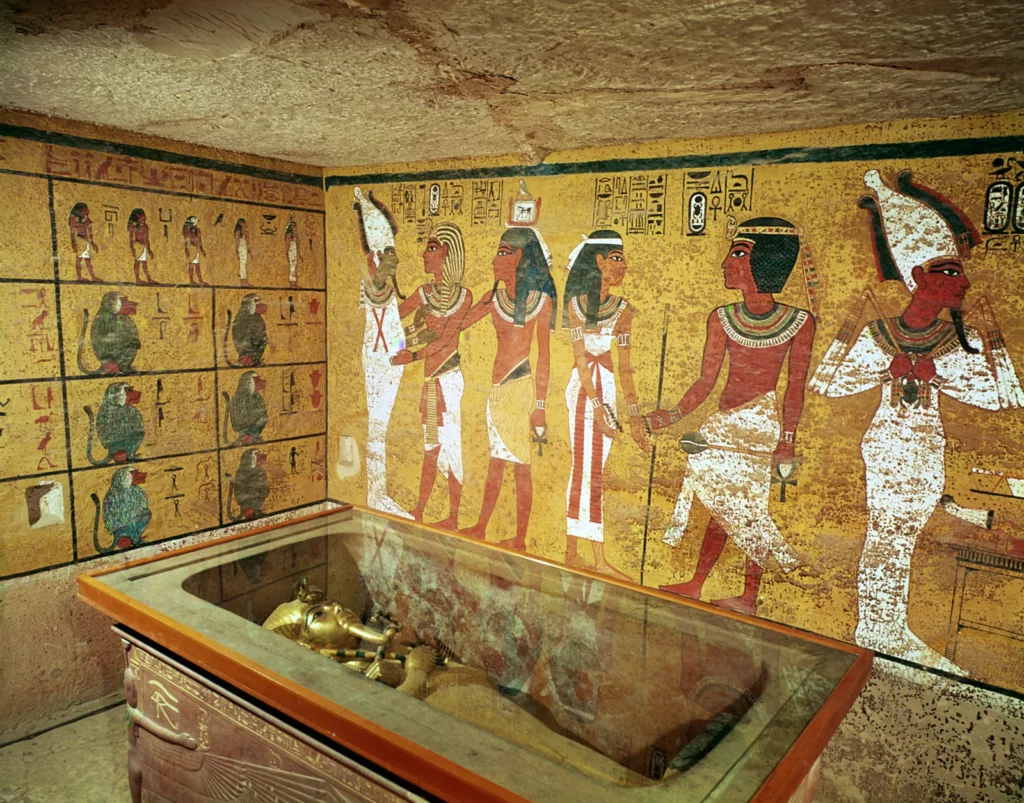On November 4th, 1922, a pivotal moment unfolded in history with the discovery of Pharaoh Tutankhamun’s tomb in the Valley of the Kings, Egypt. Archaeologist Howard Carter and his team unearthed the burial chamber, revealing a treasure trove of ancient artifacts, offering invaluable insights into Egypt’s rich history and culture.
Discovery of Tutankhamun’s Tomb
The exploration led by Howard Carter, funded by Lord Carnarvon, culminated in the revealing of Tutankhamun’s virtually intact tomb. The exquisite collection of treasures, artifacts, and the famed golden mask of the young pharaoh shed light on ancient Egyptian burial customs, art, and daily life.

Insights and Historical Treasures
- Archaeological Marvel: Tutankhamun’s tomb, discovered on November 4, 1922, remains one of the most celebrated archaeological finds, unlocking a trove of ancient history.
- Pharaoh’s Legacy: Tutankhamun’s tomb provided an unparalleled insight into ancient Egyptian society, artifacts, and burial rituals.
- Cultural Impact: The discovery sparked worldwide fascination with Egyptology, influencing art, fashion, and cultural trends during the 1920s.
Educational Exploration for Enthusiastic Learners
- Virtual Tomb Tour: Explore virtual tours of Tutankhamun’s tomb, examining the discovered artifacts and their historical significance.
- Artistic Expression: Encourage drawing or creating replicas of the golden mask or various artifacts found in Tutankhamun’s tomb.
- Historical Investigation: Delve into the life and reign of Pharaoh Tutankhamun, exploring the mysteries surrounding his short-lived rule.
Conclusion
November 4th marks the momentous discovery of Tutankhamun’s tomb, an archaeological breakthrough that reshaped our understanding of ancient Egypt. Unveiling the treasures within the tomb brought a renaissance of interest in Egyptology and captivated the world with a glimpse into the past, fostering an enduring fascination with ancient civilizations.
References
- Carter, H., & Mace, A. C. (2001). The Tomb of Tutankhamun. London: Bloomsbury Academic.
- Reeves, N. (2015). The Complete Tutankhamun: The King, the Tomb, the Royal Treasure. London: Thames & Hudson.
- Carnarvon, F., & Reeves, N. (2001). The Discovery of the Tomb of Tutankhamun. New York: Dover Publications.







Steven Rodgers
November 7, 2023 / at 3:09 pm
Would like to see links to the educational site for the Virtual Tomb Tour.